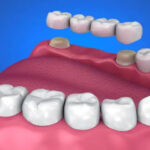When individuals prepare for orthodontic treatment, one question dominates their mind: do braces hurt? The short answer is yes—braces can cause discomfort, especially during the first few days after application and adjustments—but this pain is typically manageable and temporary. Knowing what to expect, why it occurs, and how to relieve it can make the entire process less intimidating. Braces work by applying constant, gentle pressure to shift teeth into better alignment. That pressure is what creates soreness, particularly in the initial phases. However, advances in orthodontics have made treatments far more tolerable than they were decades ago.
This article offers a comprehensive, up-to-date, and nuanced look at what kind of pain to expect from braces, when it happens, how long it lasts, and what can be done about it. We will also dive into the psychological aspect of pain expectation, bust myths, and provide evidence-backed insights that blend medical reasoning with user experience. Whether you’re a teenager about to start treatment or an adult revisiting orthodontics later in life, this guide will help prepare you mentally and physically for the road ahead.
“Pain is inevitable. Suffering is optional,” wrote Haruki Murakami. In the context of braces, the discomfort is a part of the journey, but how one handles it is entirely within one’s control. Orthodontic treatment isn’t just about achieving a straighter smile—it’s a disciplined process that requires patience and understanding. So let’s examine each phase in detail and empower you with the information needed to feel confident, informed, and ready.
The Biology Behind Braces Pain: Why It Happens
The pain associated with braces isn’t random; it has a biological basis. When braces are applied, they exert continuous pressure on the periodontal ligament, the soft tissue between the tooth and its socket. This pressure stretches and compresses the ligament, triggering a cellular response that allows the bone around the teeth to remodel. This remodeling is essential for teeth to shift position. However, this also inflames the area, leading to a sensation of tightness or soreness, especially within the first 24 to 72 hours after each adjustment.
The sensation can vary from dull pressure to acute sharpness, depending on the individual’s pain threshold, the complexity of the alignment, and even hormonal factors. It is also important to note that the pain doesn’t stem from the tooth itself but from the surrounding tissues. The body interprets this shift as a disturbance and sends inflammatory cells to the area, which in turn contribute to tenderness. As the tissues adjust to the pressure, the inflammation gradually subsides, leading to relief. In this regard, the pain can be viewed as a sign that the treatment is working.
Initial Placement: What to Expect in the First Week
The first week after braces are installed is often the most uncomfortable period. The oral cavity is adjusting not only to the pressure of the brackets and wires but also to their physical presence. During the first 6 to 8 hours, most patients feel mild discomfort. By the end of the first day, soreness often increases and may peak around the 48-hour mark. This pain is not sharp but resembles a persistent pressure or aching sensation.
The inner cheeks, tongue, and lips can also become irritated due to constant friction with the metal brackets. Eating soft foods like mashed potatoes, yogurt, or soups is strongly advised during this period. Additionally, speaking and even swallowing might feel different as your mouth adapts to the appliance. Many orthodontists recommend over-the-counter pain relievers such as ibuprofen during this period, as well as orthodontic wax to cushion the brackets and prevent sores. It’s worth remembering that this pain usually diminishes significantly within a week as tissues begin to adapt – do braces hurt.
Adjustment Appointments: Recurring Discomfort Explained
Braces require periodic tightening or adjustments to maintain pressure on the teeth and continue the realignment process. These sessions, typically scheduled every 4 to 6 weeks, often come with a renewed phase of discomfort. Although not as intense as the initial installation, adjustment pain is noticeable and can last for 2 to 3 days following the appointment.
Orthodontists change the archwires or tighten elastic ligatures during these sessions. This reactivates the pressure on the periodontal ligament, triggering another round of minor inflammation. Over time, the body learns to adapt more quickly, and many patients report that the pain experienced after later adjustments is less intense than what they felt early in the treatment. A helpful tip is to schedule these appointments later in the week to coincide with weekends or downtime, allowing for rest and recovery without disrupting your schedule – do braces hurt.
Pain Variations by Appliance Type: Metal, Ceramic, and Invisalign
Not all orthodontic systems cause the same level of discomfort. Traditional metal braces tend to exert more noticeable force, especially in the initial stages. Ceramic braces, which are less visible, often have slightly larger brackets and can cause more friction against the cheeks. Lingual braces, which are fitted behind the teeth, might lead to tongue irritation, making speech and eating more challenging in the beginning.
Invisalign or clear aligners, on the other hand, are generally considered more comfortable because they apply gentler, incremental pressure. However, patients still report mild soreness, especially during the first few hours of wearing a new aligner tray. Each time the tray is changed—typically every one to two weeks—a short period of tightness or pressure is expected. Yet, due to their smooth, custom-fit design, Invisalign aligners usually cause fewer soft-tissue abrasions than brackets.
| Appliance Type | Pain Level (1–10) | Common Complaints | Duration of Discomfort |
|---|---|---|---|
| Metal Braces | 6–8 | Soreness, mouth sores | 3–7 days |
| Ceramic Braces | 7–8 | Lip irritation, pressure | 3–7 days |
| Lingual Braces | 8–9 | Tongue pain, speech issues | 5–10 days |
| Invisalign | 3–5 | Mild tightness, gum soreness | 1–3 days |
Psychological Impact of Anticipated Pain
Anticipating pain can sometimes feel worse than the pain itself. Studies in orthodontics and pain management reveal that patients who expect extreme discomfort often report higher levels of pain. The brain’s perception of pain is influenced by emotional readiness, anxiety levels, and even stories heard from peers or online sources. Managing this psychological component is crucial – do braces hurt.
Preparing mentally for orthodontic treatment by speaking openly with your provider, reading balanced resources, and understanding the science behind braces can significantly reduce anxiety-driven pain amplification. Some orthodontic offices now provide pre-treatment counseling, setting realistic expectations, and outlining pain management strategies. This helps shift the experience from fear to control, giving the patient a psychological edge. A quote by author C.S. Lewis comes to mind: “Mental pain is less dramatic than physical pain, but it is more common and also more hard to bear.”
Food and Diet: Influences on Pain and Recovery
What you eat while wearing braces can directly affect the level and duration of discomfort. During painful periods, choosing soft, nutrient-rich foods can reduce strain on the teeth and support healing. Items such as smoothies, mashed vegetables, scrambled eggs, and soft fruits are ideal. Avoid crunchy, sticky, or hard foods like nuts, candy, and raw vegetables that can aggravate soreness or damage brackets.
Hydration is equally important, as dry mouth can exacerbate discomfort and delay tissue recovery. Cold foods and drinks, including ice water or yogurt, can act like natural anesthetics, temporarily numbing sore spots. On the other hand, spicy or acidic foods should be avoided as they can irritate sensitive tissues. Being mindful of your food choices not only reduces pain but also protects your orthodontic investment – do braces hurt.
| Food Category | Examples | Effect on Braces Pain |
|---|---|---|
| Soft Foods | Mashed potatoes, oatmeal, bananas | Soothing and easy to chew |
| Cold Foods | Smoothies, ice cream, yogurt | Numbs soreness temporarily |
| Avoid These | Popcorn, nuts, gum, hard candy | Increases pain and risk |
| Hydrating Items | Water, herbal tea, electrolyte drinks | Reduces inflammation and dryness |
Managing Braces Pain at Home
Pain from braces does not typically require prescription medication. Most patients find relief using simple, home-based solutions. Over-the-counter options like ibuprofen or acetaminophen can reduce inflammation and pain if taken at the onset of discomfort. Orthodontic wax is highly recommended to prevent and treat sores by covering sharp bracket edges. Saltwater rinses can also aid in soothing gum irritation and promoting healing.
Using a cold compress externally on the cheek near the sore area can provide temporary relief. In cases where ulcers develop inside the mouth, topical gels with benzocaine offer localized numbing. Light massage of the jaw area can also relax tight muscles affected by pressure. These steps, when used consistently, make the overall braces experience far more manageable – do braces hurt.
When to Be Concerned: Red Flags
While most discomfort from braces is normal, some symptoms require prompt professional attention. If the pain is sharp, persists beyond a week without improvement, or is accompanied by bleeding, swelling, or a loose bracket, it may indicate an issue. Infections, though rare, can develop if ulcers go untreated or if a wire punctures the gum. These situations demand a call to the orthodontist.
Pain that disrupts sleep or causes significant difficulty in eating should also not be ignored. It’s important to distinguish between expected treatment discomfort and abnormal pain. The goal of orthodontic care is long-term improvement, not suffering. Regular communication with your provider and routine follow-ups ensure that the treatment stays on track and complications are avoided – do braces hurt.
Special Considerations for Children and Teens
Younger patients often experience braces differently than adults. Their tissues tend to adapt faster, but their pain tolerance and emotional readiness can vary. Pediatric orthodontists typically take extra care in preparing children through education, modeling, and positive reinforcement. Incentive systems, colorful brackets, or using humor can help ease initial fear.
Parents should monitor signs of prolonged discomfort, mood changes, or refusal to eat—these may suggest the child is struggling more than expected. Encouraging good oral hygiene and maintaining open conversations about feelings toward braces helps build resilience. It’s not uncommon for teens to exaggerate pain due to peer influence or online content, so balancing empathy with factual support is key.
Conclusion: Embracing the Journey with Eyes Wide Open
Braces do hurt—but in a way that’s predictable, manageable, and ultimately purposeful. The discomfort you experience is not a sign that something is wrong, but rather that something is working. Pain during braces treatment is not constant, nor is it debilitating. It ebbs and flows, primarily during early installation and periodic adjustments. The majority of patients report that the pain becomes a non-issue as they become accustomed to the process.
Modern orthodontics offers various tools—from wax to aligners—that can reduce discomfort, while knowledge empowers patients to understand and manage their pain more effectively. As author J.K. Rowling once said, “Understanding is the first step to acceptance, and only with acceptance can there be recovery.” By knowing what to expect and how to cope, the journey becomes less about dread and more about transformation.
In the end, braces are more than just metal on teeth—they are milestones in a longer path toward confidence, health, and self-assurance. Discomfort is a small price to pay for a lifetime of improved function and aesthetic satisfaction. With the right mindset and preparation, you don’t just survive the braces journey—you thrive in it.
FAQs
Q1: How long do braces hurt after getting them on?
Most people feel discomfort for 3 to 7 days after initial placement. The pain gradually subsides as your mouth adjusts to the pressure.
Q2: Is it normal to feel pain every time braces are tightened?
Yes, minor pain or pressure after adjustments is common. It typically lasts 2 to 3 days and signals tooth movement.
Q3: What helps reduce braces pain at home?
Over-the-counter painkillers, cold compresses, orthodontic wax, and soft foods help ease discomfort effectively at home.
Q4: Do Invisalign aligners hurt less than traditional braces?
Yes, Invisalign tends to cause less discomfort due to its smoother design and gentler pressure, though some soreness still occurs.
Q5: When should I call my orthodontist about braces pain?
If pain lasts over a week, disrupts sleep, or includes bleeding or swelling, consult your orthodontist immediately for evaluation.











